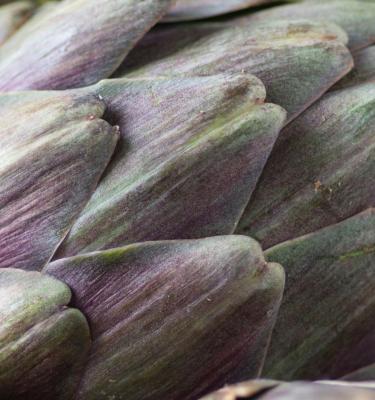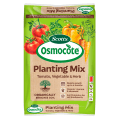

How to grow & care for globe artichokes
Globe artichoke (Cynara scolymus) are thistle like plants that produce edible flowers - harvested and eaten in their bud stage, before they open.
Artichokes are sometimes grown purely for their architectural foliage and form - these big plants have silvery grey, thistle shaped leaves that add colour and texture to perennial borders and flower beds.
Originally from Mediterranean and north African regions of the world, artichokes will grow in most climates around Australia except the tropics. They need a full sun spot in a free draining soil. As each plant can grow up to 2m tall and 1.5m wide, they also need plenty of space.
Top 4 steps to growing globe artichokes
- Choose a full sun position with a free draining soil
- Improve the soil before planting by adding Scotts Osmocote® Controlled Release Fertiliser: Tomato, Vegetable & Herb
- Globe artichokes are perennial plants that grow large, so give them plenty of space in your decorative border or vegetable garden.
- Harvest globe artichokes before the flowers open, using a sharp knife or secateurs to cut the flower bud from the main plant.
Shopping List
- Globe artichoke potted plants or seedlings
- Scotts Osmocote® Compost Premium Soil Improver
- Scotts Osmocote® Controlled Release Fertiliser: Tomato, Vegetable & Herb
- If growing in pots, Scotts Osmocote® Plus Organics Tomato, Vegetable & Herb Potting Mix
- Garden spade or fork
- Mulch
- Defender™ Pyrethrum Insect Spray
Prepare
Choose a full sun spot with free draining soil for your globe artichokes or grow in raised beds or a single plant in a large pot (eg. half wine barrel with drainage holes). Remember as artichokes grow tall (1.5-2m) and wide (up to 1.5m) they need plenty of space to grow into.
Enriched the soil before planting with Scotts Osmocote® Compost Premium Soil Improver and a small amount of Scotts Osmocote® Controlled Release Fertiliser: Tomato, Vegetable & Herb - dig these through the top 10-20cm of soil.
Planting artichokes in the garden
Artichokes are best planted in winter (in frost free regions) or spring. Dig the hole for your globe artichoke in the prepared soil. Remove the plant from the nursery pot and place it into the centre of the hole. Backfill around the root ball, making sure the plant sits at the same height it was in the pot. Water it in well. Mulch around the plants to suppress weeds and retain moisture.
Planting artichokes in pots
Artichokes are typically recommended for growing in pots because you’d only fit a single plant in a large pot like a half wine barrel.
However if you have to grow in pots - fill the large pot with Scotts Osmocote® Plus Organics Tomato, Vegetable & Herb Potting Mix and plant a single artichoke plant into the centre of the potting mix. Mulch around the plant to suppress weeds and retain moisture.
Harvest & Care
Globe artichokes are ready to harvest once the flowers have formed, but not yet opened - at this unopened stage the buds and petals are tender. Flowers typically form in spring, but you can also get flushes of growth in summer and autumn.
Cut the artichokes from the plant, leaving a few centimetres of stem attached, using a sharp knife or secateurs. If a choke has formed in the middle of the flower you need to remove this before cooking the artichokes as it’s tough and fibrous.
Remove any dead or diseased leaves from the plant in autumn or winter. Fertilise globe artichokes in early spring and again in early autumn with Scotts Osmocote® Controlled Release Fertiliser: Tomato, Vegetable & Herb.
Globe artichokes are perennials, so they’ll keep producing year after year for about 4-5 years. During their life they may produce suckers or small baby plants at the base of the main growth. You can cut these off using a sharp spade and replant them to create more plants.

Pests & Diseases
Globe artichokes are relatively pest and disease free. Aphids may attack young shoots or flowers - if needed spray with Defender™ Pyrethrum Insect Spray to control any outbreaks.
To reduce the risk of powdery mildew and other fungal diseases on the foliage - avoid overhead watering. Waterlogged or heavy soil will quickly kill globe artichokes, ensure they have a free draining soil to keep them thriving.



